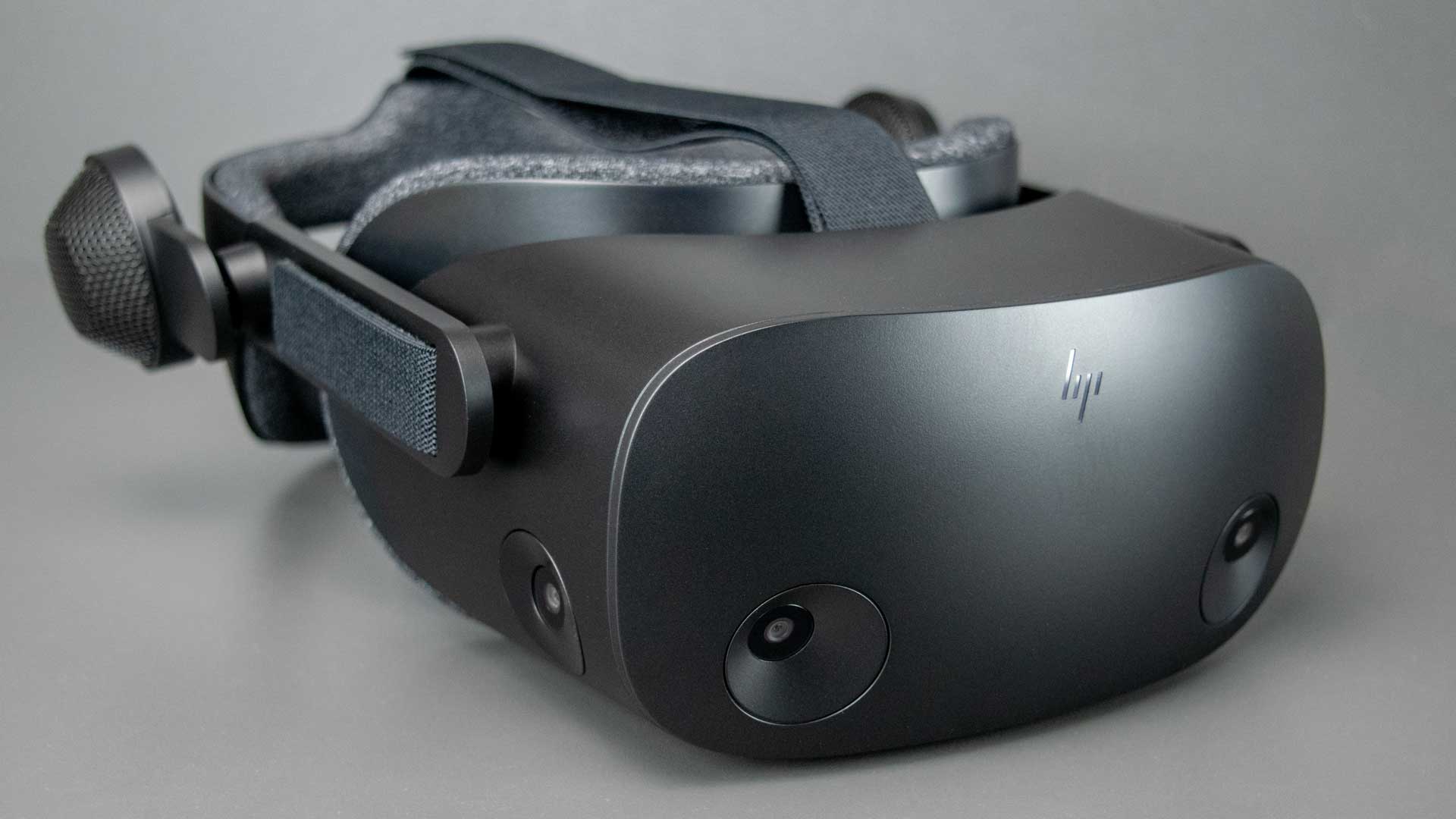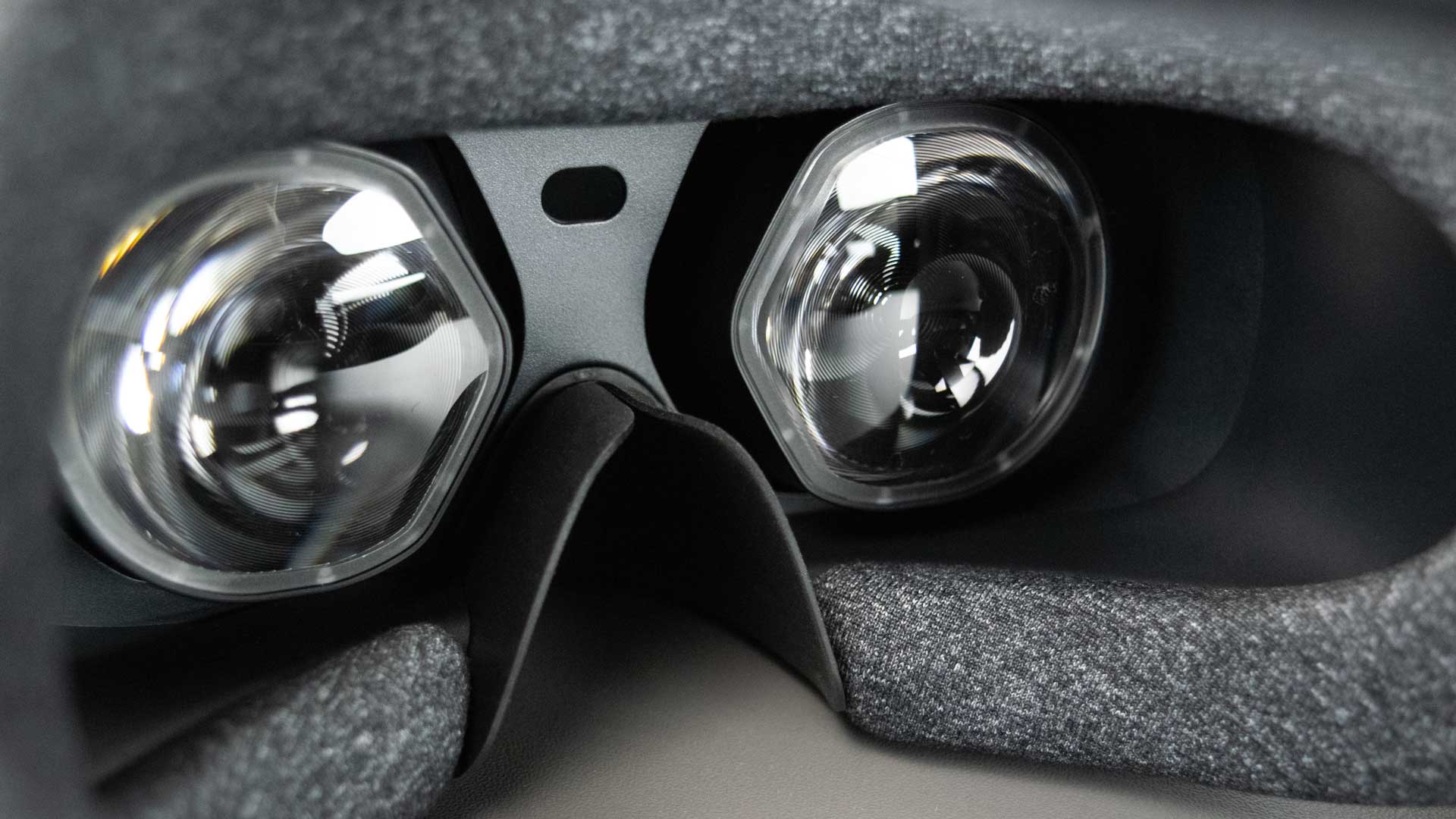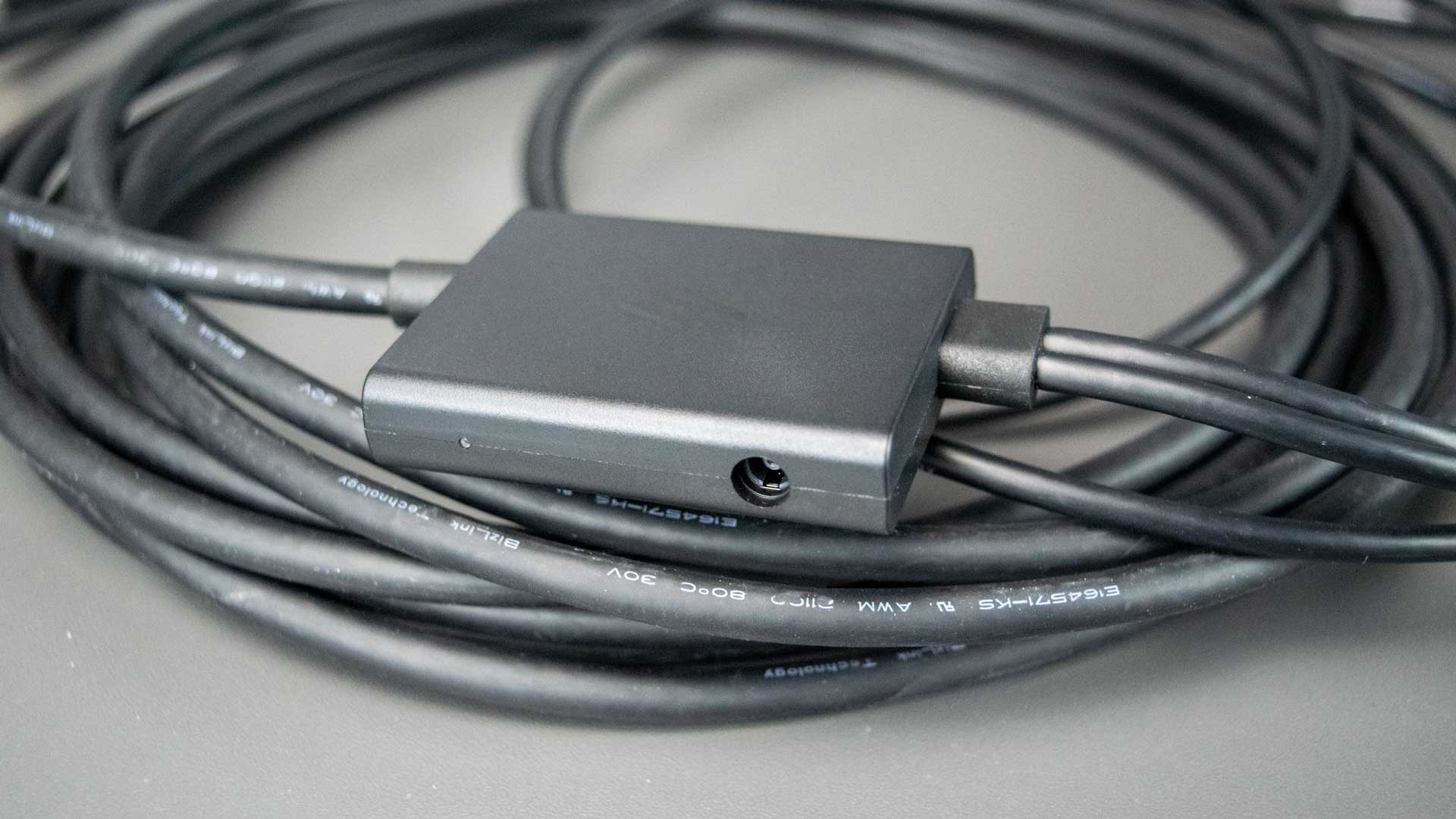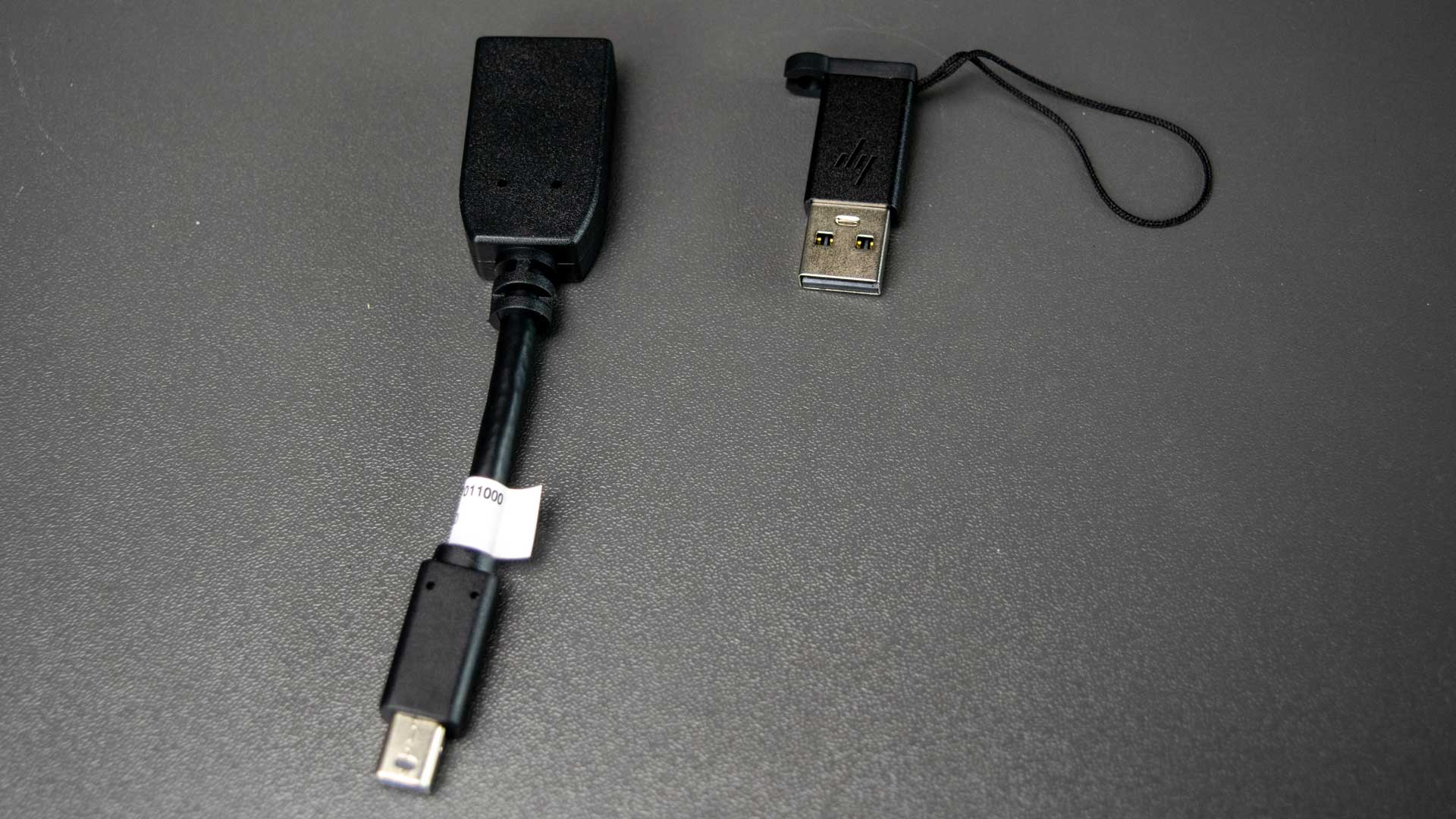Tom's Hardware Verdict
The HP Reverb G2 is a very comfortable headset with fantastic audio and fantastic display clarity. The field of view is narrower than we'd like, but not a deal-breaker. The real tragedy is tracking. Microsoft's Windows Mixed Reality Tracking was the Achilles heel of the original Reverb, and it's sadly still the fatal flaw here. It's the only reason we can't recommend this headset, unless you want just an HMD with no motion controllers.
Pros
- +
Lightweight
- +
Great audio
- +
Antimicrobial materials
- +
Incredible display resolution
Cons
- -
Tracking is a huge letdown
- -
Narrow field of view
- -
Some components feel cheap
Why you can trust Tom's Hardware
The wait is over! HP has finally begun shipping the HP Reverb G2 Windows Mixed Reality headset after making us wait half a year for it. The company first teased the second-generation Reverb headset in late May, and started taking pre-orders for the device over the summer.
Waiting for the new headset through a pandemic was painful, but was it worth it? Maybe yes. Maybe no. It really depends on what you want to do with your headset. But this model won’t be topping our best VR headsets list.

HP Reverb G2 Specs
| Panel | 2x 2.89-inch LCD with RGB sub-pixels |
| Per-eye Resolution | 2160 x 2160 |
| Refresh Rate | 90 Hz |
| Field of View | 114 degrees |
| Dimensions (LxWxH) | 7.3 x 3.3 x 3 inches (185.4 x 83.8 x 76.2mm) |
| Weight (without cable) | 1.2 pounds (544.3g) |
| IPD | Hardware adjustable: 2.4-2.7 inches (60-68mm ) |
The HP Reverb G2 is an evolution of the original HP Reverb headset. The new headset shares the same basic shape and size and offers similar technical specifications, although the material construction is somewhat different.
HP also took on the help of a partner to add new features to the Reverb G2, working with Valve to bring some of the elements from the Valve Index VR headset over to the Reverb G2. The new Reverb isn't compatible with Valve's Lighthouse sensors, but it has many features from Valve's Index.

The visor's shell is roughly the same shape as the original, but the rest of the Reverb G2 headset features are quite a departure from the original model.

The original Reverb had a fabric faceplate, which was supposed to help keep the internals cool and the lenses from fogging up. The problem with that is the fabric shell is challenging to keep clean. And with the world in the midst of a pandemic, that’s not great. The Reverb G2 has a fully plastic outer shell, which means you can wipe it down to keep it fresh and clean.
Valve Parts

At first glance, the most apparent difference between the two Reverb headsets is the head strap design. The original model had a unique head strap that terminated in a circle that cupped the back of your head. We found the design quite comfortable when we tested it, but HP decided that the head strap needed an improvement for the new model.
Get Tom's Hardware's best news and in-depth reviews, straight to your inbox.

The Reverb G2's head strap borrows design elements from the original Reverb, but much of the design comes from Valve's Index headset. HP used a rigid head strap that looks similar to the one on the Index, but HP didn't include the mechanical adjustment system on the G2. That feature is reserved for the enterprise-class HP Reverb G2 Omnicept Edition headset that's coming in 2021.

As with the first Reverb model, the new headset features three Velcro straps to help keep things snug. The side straps have a bit of spring to them, like on the Oculus Rift CV1, so you can slip the headset on and off without loosening the straps. An overhead strap helps keep the weight of the device balanced on your head.
Antimicrobial Cushions
The rear of the head strap is reinforced by a plastic frame that cradles the back of your skull. The back of the strap includes a dense cushion with a microfiber cover for comfort. The cushion is removable, so you can wash it or replace it in the future. The microfiber cover also features an antimicrobial coating to help keep the headset sanitary.

The face cushion is also wrapped in the same microfiber cloth covering, but the front cushion is less dense than the rear one. The face cushion is also removable, so you can clean it or replace it down the road. HP partnered with Valve to bring the Index's magnetic facial interface concept to the Reverb G2, although the cushions are not interchangeable between Valve and HP's headsets.

Valve Lenses and Speakers Too
HP didn't just borrow Valve's magnetic facial interface idea. The company also worked out a licensing deal for the speaker and lens technologies Valve developed for the Index headset.

The lenses in the Reverb G2 feature Valve's dual-element Fresnel lens technology, which it developed for the Index. However, the Reverb G2's lenses are significantly smaller than those in the Index. HP said the smaller lenses help keep the overall weight of the visor to a minimum.

The lenses' placement is also different: Valve set the lenses in the Index canted outwards by 5-degrees to offer a wider field of view. HP put the lenses in the Reverb canted inwards to compensate for the narrower housing. Whereas the Index provides a 130-degree FoV, HP claims the Reverb G2 offers 114-degrees of viewing. But our testing suggests the horizontal viewing angle is closer to 90-degrees.
Mechanical IPD Slider
The Reverb G2 includes a slider for linear lens spacing adjustment. The Reverb G2 supports an IPD range of 60mm to 68mm, which is surprisingly narrow compared to other VR headsets. For example, the Valve Index has a range of 58mm to 72mm, and the HTC Vive Pro supports 61mm to 72mm. Even the Oculus Quest 2 supports 58mm to 68mm, albeit in three specific settings, not a linear adjustment.

8mm isn't much range, but it is a massive improvement over the original HP Reverb headset's fixed lenses. HP also said that the display should remain clear up to 2.5mm out of range, so you should be fine if your IPD lands between 57.5mm and 70.5mm.
The Reverb G2 features dual 90Hz LCD panels with 2160 x 2160 pixels each. These panels are the same resolution as those found in the original Reverb, but HP says the new version offers improved clarity, higher contrast, and more brightness. We don't have an original Reverb on hand, so we can't make a direct comparison, but the displays in the Reverb G2 are clear and bright, so we don't doubt the claim.

It has Speakers, not Headphones
HP also borrowed Valve's audio technology for its new headset. The Reverb G2 includes a pair of over-the-ear speakers, which produce impressive audio quality and volume while never touching your ears. The over-ear design allows audio to sound like it is coming from the environment around you, giving you a more immersive audio experience.

HP's version of the over-the-ear speakers is not quite as elegant as Valve's. The housing around re Reverb's speakers feels like cheap plastic compared to the Index, and the adjustment mechanism isn't as smooth.

It doesn't feel like the speakers will break, but they don't have the premium feel that you get from the Index version. The speakers are removable if you prefer using headphones, but we can't imagine wanting to do that. These speakers sound great, despite their clunky appearance.

The Reverb speakers produce clear and loud audio, with ample bass for a nice balanced audio experience.
A Long Tether Cable
The Reverb G2 comes from the factory, with the data cable disconnected. The cable is 6 meters long and quite thick. The cable's headset end features a proprietary plug that slips into a port located just above the left lens. The cable runs across the top of the left speaker and down into a loop on the back of the head strap to guide the cable behind you.

The PC end of the tether cable includes a full-size locking DisplayPort plug and a USB Type-C plug. HP also tossed in a pair of port-change dongles if you don't have those ports on your computer. There's a USB Type-C to Type-A adaptor, complete with a tether strap so you won't lose it. There's also a DisplayPort to miniDP dongle that facilitates use on a laptop.

The Type-C connector is useful if you have an original RTX 20-series card with a VirtualLink port or one of the upcoming Radeon 6000 cards with a Type-C port on the back of the card. It makes plugging in the headset just a little bit more convenient, although there is plenty of slack between the DisplayPort and USB ends , so you shouldn't have a problem reaching any port.

The USB port doesn't produce enough power to drive the headset, so HP also includes a 45w power brick, which plugs into a power injection block on the tether cable.
New Ergonomic Controllers
The HP Reverb G2 is a Windows Mixed Reality headset, which usually means that it will include the most un-ergonomic VR controllers on the market. However, HP finally did what it should have done the first time it built a Windows MR headset: The compant redesigned the controllers' shape to fit the human hand better.

Microsoft's reference design for its Windows MR controllers has a terrible square handle that doesn't fit well in your hand and is uncomfortable to use for long periods. HP altered the design for significantly better comfort. The new controllers have smooth rounded handles that fit the contour of your hands.
The controllers have a trigger button, a grip button, a thumbstick, and two face buttons (A and B on the right controller, X and Y on the left). Being Windows MR controllers, they also include a menu button and a Windows button. Each button is easy to reach and placed in a logical spot for ergonomic use.

The tracking halo is the only component of the controllers that retains the same design as the older version.
Like previous Windows MR controllers, HP's new controllers require two AA batteries. The battery compartment is housed inside the handle, like previous versions.
The Setup Process
When Microsoft set out to create the Windows Mixed Reality platform, one goal stood out above the rest: Make it as simple to pick up and use as possible. That mantra was the primary reason that all Windows MR headsets have inside-out camera-based tracking systems that don't require additional base stations or sensors.
To get set up, you don't even need to download any software manually. Just plug the USB and the DisplayPort cable into the computer and plug in the headset's power lead to get started. Windows 10 should automatically detect when a Windows MR headset is present, and it will automatically download the drivers and software the first time you plug a headset in.
Windows MR headsets also support SteamVR, so you may want to install that to get accesso to a huge catalogue of games. Microsoft makes a utility called Windows Mixed Reality for Steam VR, which you can snag on the Windows Store, enabling you to control SteamVR with your Windows MR device.
Kevin Carbotte is a contributing writer for Tom's Hardware who primarily covers VR and AR hardware. He has been writing for us for more than four years.
-
colson79 Do you guys have an AMD x570 MB you could test the HP Reverb G2 on? Seems like there is an issue with the usb ports on the X570 not working with the G2. HP acknowledge they are looking into but maybe if it made the news they might work a little harder. Also I haven't had any issues with the controller tracking on my G2. Track works better than on my Rift CV1.Reply -
Kpop4Ever Not sure about that "Real O Virtual's Test HMD application", but your results do not match real-world data collected from owners, which shows consistently that the HFOV on the G2 is actually 98°, not 88°. Additionally, the VFOV on the Index is nowhere near 134°. It's actually 109°, at best.Reply
https://risa2000.github.io/hmdgdb/
https://www.infinite.cz/blog/VR-Field-of-View-measured-explained